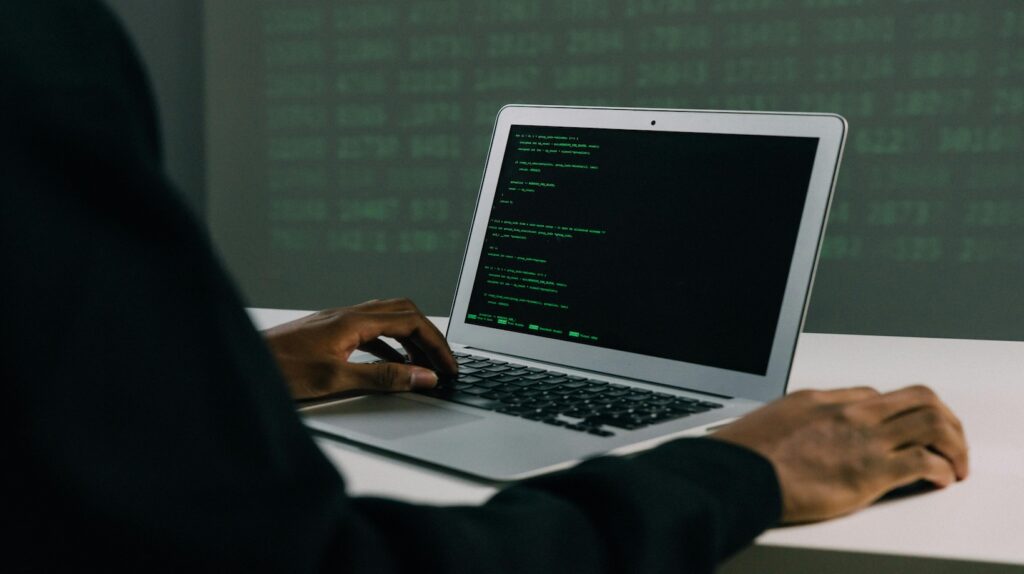Diving deeper into the realm of cyber security, the significance of digital forensics emerges. It is not just a concept; it’s a discipline bridging the gap between technology and law enforcement, a science dedicated to investigating, identifying, and halting cyber crimes.
Digital Forensics Cyber Security
Digital forensics acts as the digital detective in the field of cyber security. Its primary aim, to probe for cyber threats and decipher the details.

When a cyber threat becomes a reality, digital forensics comes into play – responding to the breach, ensuring the curtailing of additional damage, and collecting the digital ‘fingerprints’ left behind the perpetrator(s).
These digital traces provide insights into the ‘when’, ‘where’, and ‘how’ of cyber attacks, delivering the fact scenarios to law enforcement agencies for further action.
Take the significant uptick in cyber crimes in 2020, for example. A 600% increase in phishing attacks was recorded in this period, (Source: Cybint) – in such instances, it is digital forensics that steps up, contributing to addressing and halting these activities.
Key Concepts and Practices in Digital Forensics
The daily operations of digital forensics center around three abstract concepts: identification, preservation, and analysis. They are the cyber equivalent of the steps a detective takes at a crime scene.
- Identification of digital evidence: Scanning for oddities in the system, alerting for suspicious activities. For instance, unauthorized login attempts and unusual network traffic.
- Preservation of digital integrity: Ensuring the net remains untampered – capturing ‘digital snapshots’ of the crime scene for future reference.
- Analysis of the data footprint: Interpreting the gathered data, determining the attack vector, tracing the source, and gathering enough evidence for a potential legal proceeding.
Drawing these concepts into practice in real-world scenarios sets digital forensics apart as a key player in digital defense teams, striving to maintain the sanctity of cyber space despite growing threats.
Tools and Techniques in Digital Forensics
In the world of digital forensics, a number of diverse tools and technologies are used. These serve to identify, preserve, and analyze digital evidence, playing a vital role in combating cybercrime. This portion of the article explores some of the popular software in digital forensics, as well as emerging technologies that are broadening the scope of forensic investigations.

Across the globe, several digital forensics software stand test of time due to their effectiveness.
These tools assist professionals in the detection, collection, and analysis of digital evidence. For instance:
- Autopsy: This open-source digital forensics platform is recognized for file recovery, keyword search, and web artifact analysis capabilities.
- Encase Forensic: Used by many law enforcement agencies, Encase Forensic leads in disk imaging and data analysis competencies.
- FTK Imager: This software is lauded for data preview and disk imaging functions, aiding in efficient evidence collection.
These tools prove indispensable against the backdrop of escalating cybercrime, enabling digital forensics professionals to carry out their jobs more effectively and comprehensively.
Emerging Technologies in Forensic Investigations
Forensic investigations aren’t stagnant; they’re shaped by technological advancements. As innovative technologies emerge, they offer promising prospects in the field of digital forensics.

Here are a few notable examples:
- Artificial Intelligence (AI): Forensic professionals increasingly rely on AI for pattern recognition, anomaly detection, and automated report generation.
- Blockchain Technology: It offers transparent, tamper-proof, decentralized data management systems, that promote integrity in digital evidence handling.
- Cloud Forensics: As more data is stored in the cloud, digital investigators implement techniques to retrieve and analyze evidence from cloud-based sources.
In sum, the tools and techniques of digital forensics constantly evolve. As the frequency and complexity of cyber threats increase, the growth and enhancement of these tools and technologies are ever-more crucial to ensure a robust defense against cybercriminal activities.
The exponential rise in the Internet of Things (IoT) devices enhances the threat landscape. These devices often lack robust security measures, making them easy targets and increasing the complexity of digital forensic investigations. Even with emerging technologies like AI and blockchain improving forensics, constantly catching up with these evolving threats poses a significant challenge for digital forensics.

